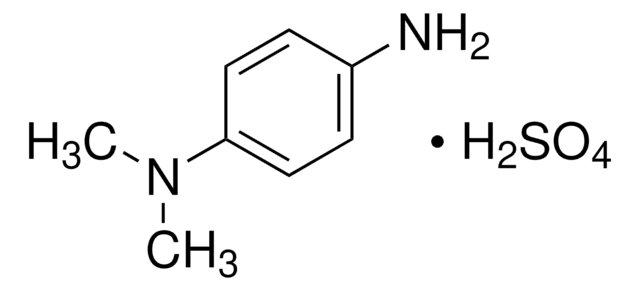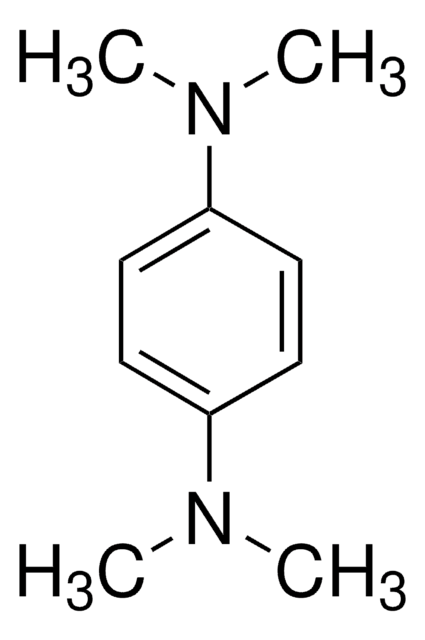193992
N,N-Dimethyl-p-phenylenediamine
97%
Sinónimos:
4-(Dimethylamino)aniline, 4-Amino-N,N-dimethylaniline, N,N-Dimethyl-1,4-phenylenediamine, DMPPDA
About This Item
Productos recomendados
Nivel de calidad
Análisis
97%
formulario
solid
bp
262 °C (lit.)
mp
34-36 °C (lit.)
cadena SMILES
CN(C)c1ccc(N)cc1
InChI
1S/C8H12N2/c1-10(2)8-5-3-7(9)4-6-8/h3-6H,9H2,1-2H3
Clave InChI
BZORFPDSXLZWJF-UHFFFAOYSA-N
¿Está buscando productos similares? Visita Guía de comparación de productos
Descripción general
Aplicación
Palabra de señalización
Danger
Frases de peligro
Consejos de prudencia
Clasificaciones de peligro
Acute Tox. 1 Dermal - Acute Tox. 2 Oral - Acute Tox. 3 Inhalation
Código de clase de almacenamiento
6.1A - Combustible acute toxic Cat. 1 and 2 / very toxic hazardous materials
Clase de riesgo para el agua (WGK)
WGK 3
Punto de inflamabilidad (°F)
195.8 °F - closed cup
Punto de inflamabilidad (°C)
91 °C - closed cup
Equipo de protección personal
Eyeshields, Faceshields, Gloves, type P2 (EN 143) respirator cartridges
Elija entre una de las versiones más recientes:
¿Ya tiene este producto?
Encuentre la documentación para los productos que ha comprado recientemente en la Biblioteca de documentos.
Nuestro equipo de científicos tiene experiencia en todas las áreas de investigación: Ciencias de la vida, Ciencia de los materiales, Síntesis química, Cromatografía, Analítica y muchas otras.
Póngase en contacto con el Servicio técnico








